It’s Time to Reinvent Your Performance Reviews. Your Employees Will Thank You for It.
Posted on November 29th, 2018 Read time: 3 minutes

By: Tania Fiero, Vice President of Human Resources
Published by: Entrepreneur
It’s not uncommon for “performance review season” — which many companies are about to embark on — to cast a shadow over a company’s employees. Almost everyone who participates in a performance review is dissatisfied with the process.
There’s evidence of that: Deloitte recently conducted a study of more than 1,000 organizations in which respondents rated their performance management. The results revealed that people polled strongly disliked the process, yet 86 percent of those surveyed said they continued to use performance ratings.
Those ratings have a long history: Traditional performance review systems were created in the 1970s, and they’re still widely used despite the negativity toward them voiced by employees, supervisors and HR personnel alike. The overall “review” culture does seem to be changing in some areas, though.
For example, leaders at Netflix are known for holding “real-time 360” lunches and dinners, where team members can share feedback and criticism. The streaming giant’s annual employee turnover is 11 percent, which is lower than LinkedIn’s national average for tech companies. So, based on that 11 percent figure, Netflix might be on to something.
The mistake of looking backward instead of forward
In an age when agility is a top priority and “agile HR” is challenging HR professionals to look to the software development industry for inspiration, “performance management” looks backward on work that an individual did as much as a year prior. And, ultimately, this method won’t help employees, teams and organizations meet urgent goals in the next two months. What will help them is a performance review system that follows the following five best practices:
1. Be forward-looking.
An ideal performance review takes into account the goals and strategies of the company, then figures out how an employee’s unique skills and interests can best achieve those goals. Because employees continue to learn on the job, supervisors should also take stock of the competencies that their employees need to gain. Then they can position those staffers to reach these goals when opportunities arise.
For example, supervisors can anticipate a hiring need months in advance and give employees first consideration.
Employees will embrace this approach, according to Mercer’s 2018 Global Talent Trends study. The study reported employees as saying that having bosses who provide them with a clear direction is one of the best ways to help them succeed.
2. Be inclusive and use the technology that facilitates that.
The push to create agile companies means that work is often accomplished with teams of employees collaborating to meet business objectives. It’s no longer enough for supervisors to be the sole source of employee feedback, and systems such as Quantum Workplace, Standout and 15Five let team members leave comments and feedback. Still, in the same Mercer study, only 18 percent of companies reported using technology platforms to collaborate.
3. Make things easy and fun.
Mercer reported that 47 percent of HR leaders surveyed expected digital technology to become a vital part of their employee strategy in the next 12 months. Because employees so dread performance management, it’s a good idea to utilize technology to do a total “refresh” and wow them with a great user experience in order to earn their buy-in and their creation of new habits.
For example, 15Five allows team members to give one another high-fives as a form of encouragement — a small feature that can create a better experience.
4. Keep it cost-effective.
The most complex talent management systems can take up to two years for HR and IT departments to implement. Meanwhile, web-based platforms can be rolled out in weeks, and employees can access them from anywhere they have Wi-Fi.
Smaller companies have never been the target for performance-management systems, but vendors with simple and affordable subscription options are providing excellent solutions. It’s easier than ever to find a solution that fits any budget.
A system like 15Five, in which employees list goals and accomplishments each week, is billed based on the number of participating employees and can help the boss keep in touch with team members.
5. Tie performance to compensation.
Old systems rate employees on a scale and then leave it up to HR to assign a percentage or dollar increase that takes into account the budget for merit increases. That process is subject to supervisor bias. According to the Society for Human Resource Management, the standard merit increase in 2018 has been 3 percent.
Think about the possibility of a future system that could take the qualitative data provided through comments made by team members, team leads and supervisors, and use artificial intelligence to recommend a pay adjustment based on competitive salary data and/or an internal compensation scale. That would be amazing!
Businesses have been struggling with ineffective performance review models for decades. To implement a strategy that works, look to the future with a modern, user-centric platform.
See the published article here: Entrepreneur.com
Related Articles
Posted on November 29th, 2018 Read time: 3 minutes

By: Tania Fiero, Vice President of Human Resources
Published by: Entrepreneur
It’s not uncommon for “performance review season” — which many companies are about to embark on — to cast a shadow over a company’s employees. Almost everyone who participates in a performance review is dissatisfied with the process.
There’s evidence of that: Deloitte recently conducted a study of more than 1,000 organizations in which respondents rated their performance management. The results revealed that people polled strongly disliked the process, yet 86 percent of those surveyed said they continued to use performance ratings.
Those ratings have a long history: Traditional performance review systems were created in the 1970s, and they’re still widely used despite the negativity toward them voiced by employees, supervisors and HR personnel alike. The overall “review” culture does seem to be changing in some areas, though.
For example, leaders at Netflix are known for holding “real-time 360” lunches and dinners, where team members can share feedback and criticism. The streaming giant’s annual employee turnover is 11 percent, which is lower than LinkedIn’s national average for tech companies. So, based on that 11 percent figure, Netflix might be on to something.
The mistake of looking backward instead of forward
In an age when agility is a top priority and “agile HR” is challenging HR professionals to look to the software development industry for inspiration, “performance management” looks backward on work that an individual did as much as a year prior. And, ultimately, this method won’t help employees, teams and organizations meet urgent goals in the next two months. What will help them is a performance review system that follows the following five best practices:
1. Be forward-looking.
An ideal performance review takes into account the goals and strategies of the company, then figures out how an employee’s unique skills and interests can best achieve those goals. Because employees continue to learn on the job, supervisors should also take stock of the competencies that their employees need to gain. Then they can position those staffers to reach these goals when opportunities arise.
For example, supervisors can anticipate a hiring need months in advance and give employees first consideration.
Employees will embrace this approach, according to Mercer’s 2018 Global Talent Trends study. The study reported employees as saying that having bosses who provide them with a clear direction is one of the best ways to help them succeed.
2. Be inclusive and use the technology that facilitates that.
The push to create agile companies means that work is often accomplished with teams of employees collaborating to meet business objectives. It’s no longer enough for supervisors to be the sole source of employee feedback, and systems such as Quantum Workplace, Standout and 15Five let team members leave comments and feedback. Still, in the same Mercer study, only 18 percent of companies reported using technology platforms to collaborate.
3. Make things easy and fun.
Mercer reported that 47 percent of HR leaders surveyed expected digital technology to become a vital part of their employee strategy in the next 12 months. Because employees so dread performance management, it’s a good idea to utilize technology to do a total “refresh” and wow them with a great user experience in order to earn their buy-in and their creation of new habits.
For example, 15Five allows team members to give one another high-fives as a form of encouragement — a small feature that can create a better experience.
4. Keep it cost-effective.
The most complex talent management systems can take up to two years for HR and IT departments to implement. Meanwhile, web-based platforms can be rolled out in weeks, and employees can access them from anywhere they have Wi-Fi.
Smaller companies have never been the target for performance-management systems, but vendors with simple and affordable subscription options are providing excellent solutions. It’s easier than ever to find a solution that fits any budget.
A system like 15Five, in which employees list goals and accomplishments each week, is billed based on the number of participating employees and can help the boss keep in touch with team members.
5. Tie performance to compensation.
Old systems rate employees on a scale and then leave it up to HR to assign a percentage or dollar increase that takes into account the budget for merit increases. That process is subject to supervisor bias. According to the Society for Human Resource Management, the standard merit increase in 2018 has been 3 percent.
Think about the possibility of a future system that could take the qualitative data provided through comments made by team members, team leads and supervisors, and use artificial intelligence to recommend a pay adjustment based on competitive salary data and/or an internal compensation scale. That would be amazing!
Businesses have been struggling with ineffective performance review models for decades. To implement a strategy that works, look to the future with a modern, user-centric platform.
See the published article here: Entrepreneur.com






